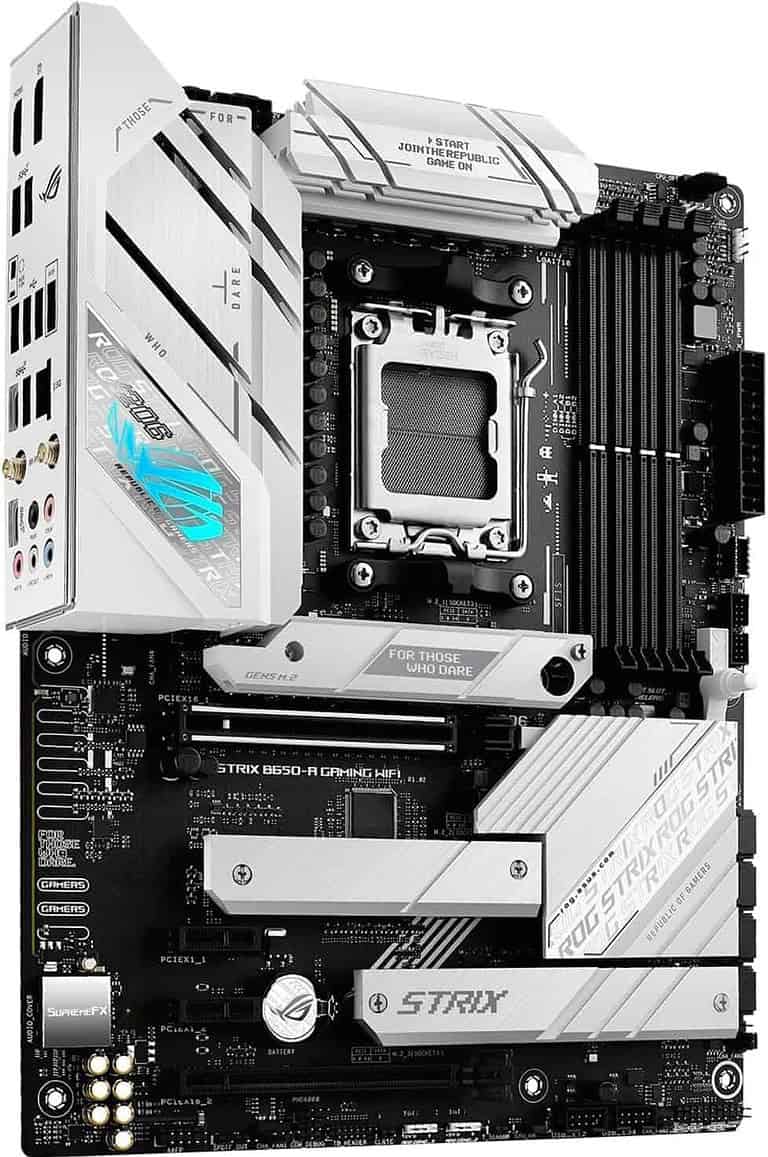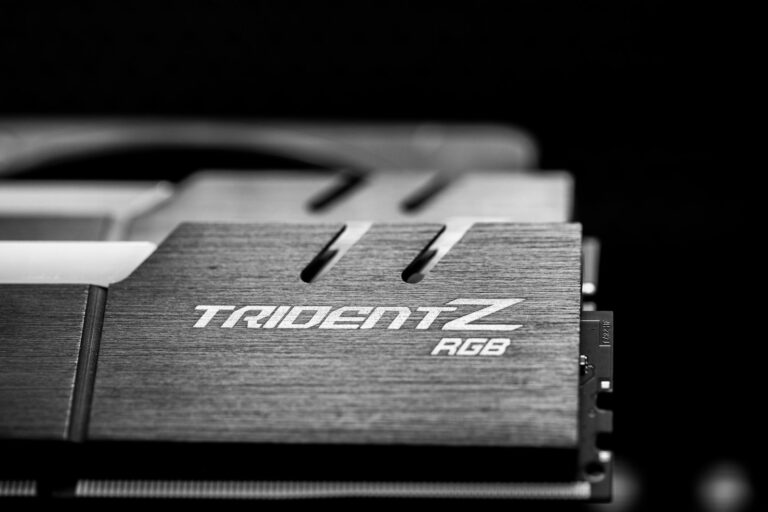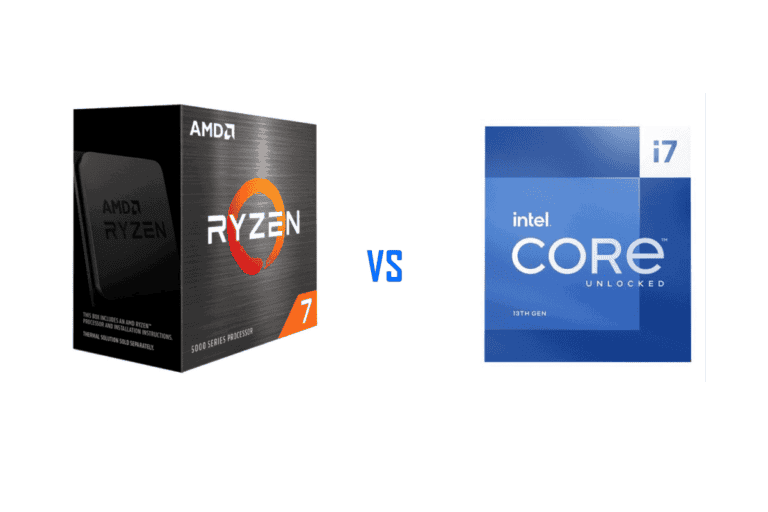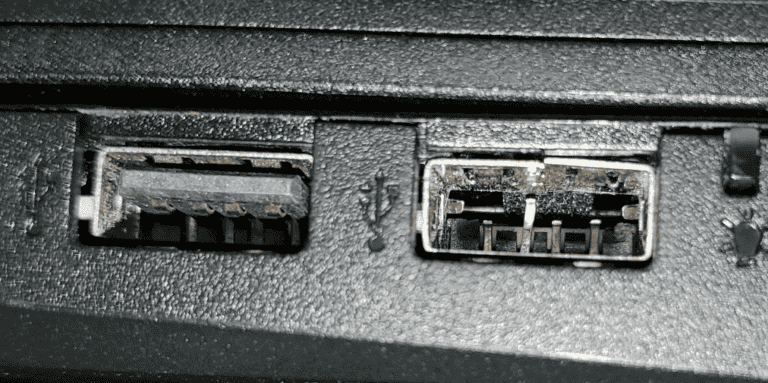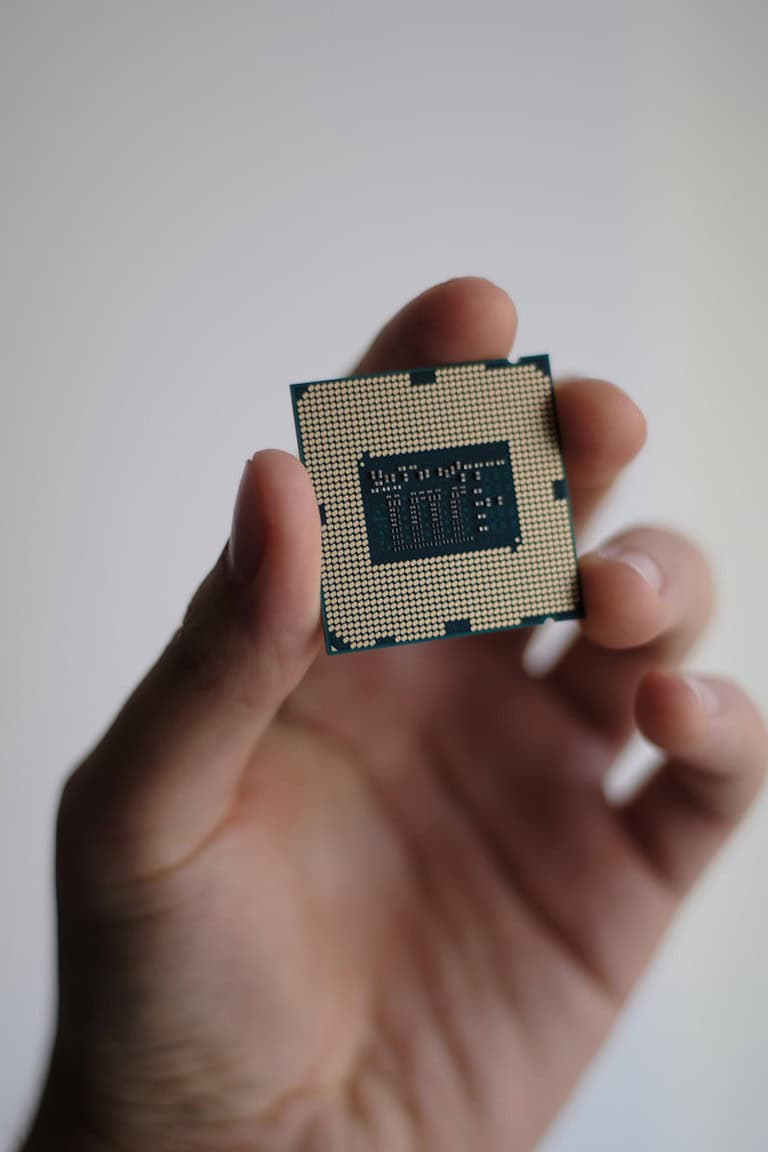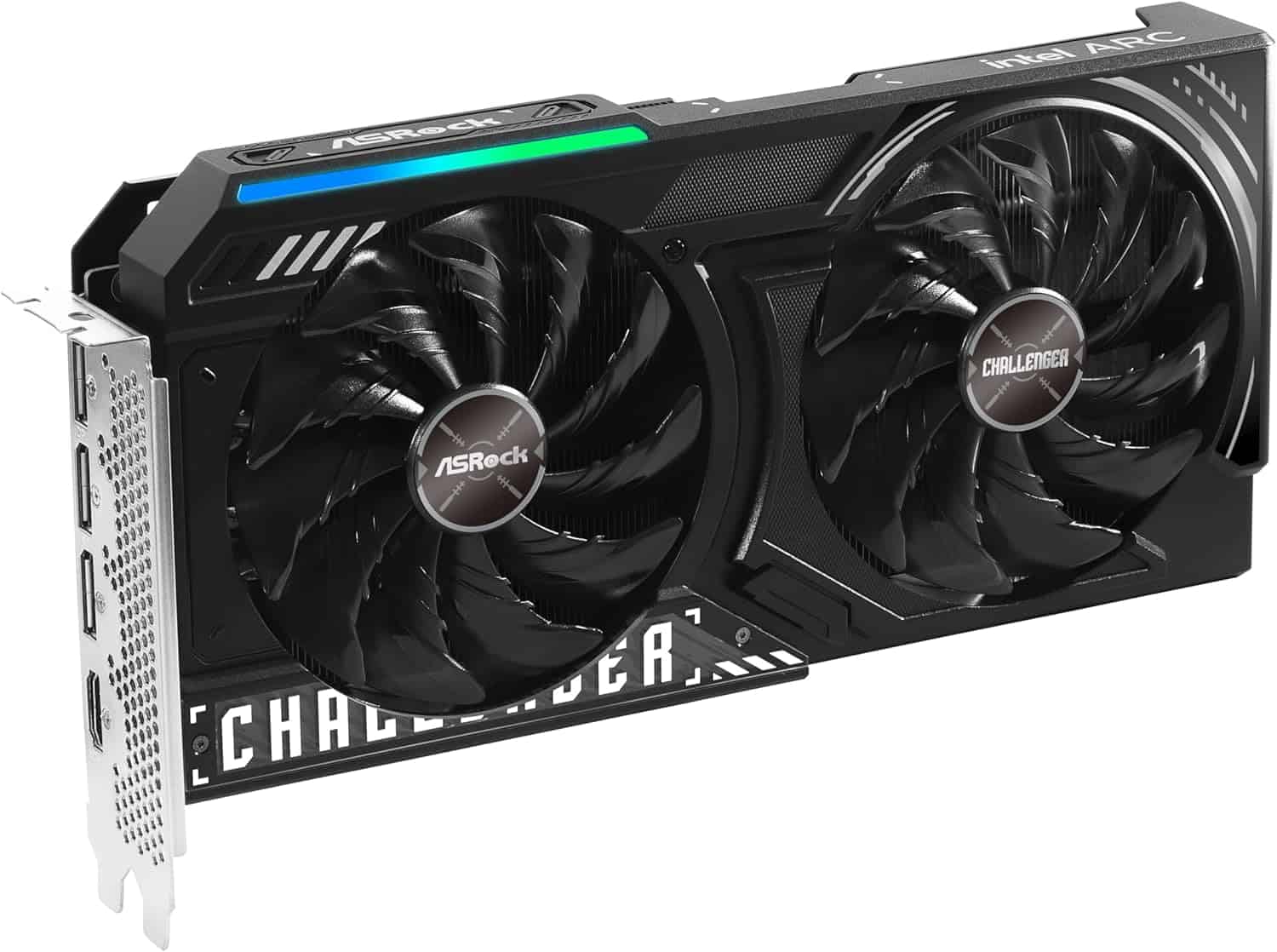
Intel’s B-series Arc cards are making waves in the graphics card market. These new GPUs promise improved performance and features for desktop computers. The recent leak of the Intel Arc B580 on Amazon has sparked excitement among tech enthusiasts.
The Intel Arc B580 is set to use the Battlemage BMG-G21 GPU core with 20 Xe2 cores, offering a significant upgrade over previous Arc A-series graphics cards. This advancement in architecture suggests Intel is serious about competing in the high-performance graphics space. The B580 also boasts 12 GB of memory, positioning it as a strong contender for gaming and content creation tasks.
Intel’s expansion of the Arc lineup demonstrates their commitment to the discrete GPU market. The B-series cards are expected to support all current leading media formats, including AV1 video encoding. This feature set makes them attractive options for users seeking versatile graphics solutions.
Intel Arc B Series Graphics Cards: A New Contender in Budget GPUs
Intel is expanding its Arc discrete graphics card lineup with the introduction of the B series. These new GPUs target mainstream users and budget-conscious gamers, offering decent performance at affordable prices.
What are Intel Arc B Series GPUs?
The Intel Arc B series consists of the Arc A570M and Arc A530M, designed for laptops, and the Arc A770 and Arc A750, designed for desktops. These cards aim to provide a smooth gaming experience at 1080p resolution for popular titles.
Key Features and Specifications
- Architecture: Based on Intel’s Xe HPG microarchitecture.
- Memory: GDDR6 memory with varying capacities depending on the model.
- Ray Tracing: Support for hardware-accelerated ray tracing.
- XeSS: Intel’s AI-powered upscaling technology to boost performance.
- AV1 Encode: Hardware encoding for the AV1 codec, ideal for content creators and streamers.
Target Audience and Use Cases
- Mainstream gamers: Those looking for a good 1080p gaming experience without breaking the bank.
- Content creators: The AV1 encoding capabilities make these cards appealing for video editing and streaming.
- Everyday users: Suitable for general computing tasks and casual gaming.
Competitive Landscape
The Intel Arc B series competes with NVIDIA’s GeForce RTX 30 series and AMD’s Radeon RX 6000 series, particularly in the mid-range segment. Intel aims to differentiate itself through competitive pricing and features like XeSS and AV1 encoding.
Potential Advantages of Intel Arc B Series
- Price-to-performance: Intel is positioning these cards as offering strong value for the price.
- XeSS upscaling: This technology could provide a performance boost in supported games.
- AV1 encoding: A valuable feature for content creators.
Potential Drawbacks
- Driver maturity: As a newer player in the discrete GPU market, Intel’s drivers may still need further optimization.
- Game compatibility: Performance may vary across different games.
Overall, the Intel Arc B series presents an interesting option for budget-minded users. If you’re looking for a capable graphics card without spending a fortune, these GPUs are worth considering.
Building a Budget-Friendly Gaming PC
If you’re considering an Intel Arc B series GPU, here are some tips for building a budget-friendly gaming PC:
- Choose a compatible motherboard: Ensure your motherboard has a PCIe 4.0 slot for optimal performance.
- Select a balanced CPU: A mid-range CPU like an Intel Core i5 or AMD Ryzen 5 will pair well with these GPUs.
- Don’t skimp on RAM: Aim for at least 16GB of DDR4 RAM.
- Consider a good-quality power supply: Ensure your power supply has enough wattage to comfortably handle the GPU and other components.
- Look for deals on storage: A combination of an SSD for your operating system and games and a larger HDD for mass storage can be cost-effective.
By carefully selecting components and considering your budget, you can build a capable gaming PC with an Intel Arc B series GPU at its heart.
Key Takeaways
- Intel’s B-series Arc cards use new Battlemage architecture for improved performance
- The Arc B580 features 12 GB memory and 20 Xe2 cores
- B-series cards support leading media formats, including AV1 video encoding
Intel B Series Arc Cards Overview
Intel’s B Series Arc cards represent a significant step in the company’s graphics processing unit (GPU) development. These cards aim to compete with established players in the discrete GPU market, offering improved performance and features.
Intel’s Entry into the GPU Market
Intel launched its Arc brand to enter the discrete GPU market in 2022. This move marked a shift from integrated graphics to standalone cards. The company leveraged its existing semiconductor expertise to develop competitive GPUs.
Intel’s Arc GPUs use the Xe graphics architecture. This architecture powers both integrated and discrete solutions. The discrete GPUs target gamers and content creators, offering features like hardware-accelerated ray tracing and AI-enhanced upscaling.
Intel faced initial challenges with driver stability and game compatibility. The company has since made progress in addressing these issues through regular software updates.
The Arc Alchemist Lineup
The Arc Alchemist series was Intel’s first generation of discrete GPUs. It included several models targeting different market segments:
- Arc A3 series: Entry-level cards for casual gaming and basic content creation
- Arc A5 series: Mid-range options for 1080p gaming
- Arc A7 series: High-end cards competing with NVIDIA and AMD offerings
Key features of Arc Alchemist GPUs include:
- XeSS: AI-powered upscaling technology
- DirectX 12 Ultimate support
- Hardware-accelerated ray tracing
- AV1 encoding capabilities
These cards offered competitive performance in their respective price brackets, though they faced stiff competition from established GPU makers.
Battlemage: The Next Step for Intel Arc
Battlemage represents Intel’s second-generation discrete GPU architecture. It aims to improve upon Alchemist’s foundation with enhanced performance and efficiency. The leaked Intel Arc B580 appears to be part of this new lineup.
Rumored specifications for the Arc B580 include:
- 12GB of GDDR6 memory
- 192-bit memory bus
- PCIe 5.0 x8 interface
- TDP lower than 225W
The B580 is expected to target the mid-range to high-end market segment. It may compete with NVIDIA’s RTX 4060 series and AMD’s equivalents.
Intel plans to unveil Battlemage GPUs in December 2024, potentially beating competitors to market with new offerings. This early launch could give Intel an advantage in capturing market share.
Technical Specifications and Architecture
Intel’s B series Arc cards represent a significant leap in graphics technology. The new architecture brings enhanced performance, improved memory subsystems, and advanced ray tracing capabilities.
Alchemist GPU Architecture
The Alchemist GPU architecture forms the foundation of Intel’s Arc graphics cards. It utilizes a tile-based design, allowing for efficient scaling across different performance levels. The architecture incorporates Xe Vector Engines for traditional rasterization workloads and Xe Matrix Engines for AI-accelerated tasks.
Alchemist GPUs feature a redesigned cache hierarchy. This includes larger L1 caches for each Xe-core and a shared L2 cache. The improved cache structure aims to reduce memory latency and boost overall performance.
Intel has implemented hardware-based ray tracing acceleration in Alchemist. This technology enables more realistic lighting, shadows, and reflections in supported games and applications.
Memory and Bandwidth
Intel Arc B series cards use GDDR6 memory, providing high bandwidth for demanding graphics tasks. The exact memory configurations vary by model, with capacities ranging from 6GB to 16GB.
Memory bandwidth is a crucial factor in graphics performance. Arc cards feature wide memory buses, typically 128-bit or 256-bit, to ensure ample data throughput. This allows for smooth rendering of high-resolution textures and complex scenes.
Intel has implemented advanced memory compression techniques. These algorithms help reduce the amount of data transferred between the GPU and memory, effectively increasing the available bandwidth.
XE Cores and Ray Tracing
Xe cores are the fundamental building blocks of Intel Arc GPUs. Each Xe core contains multiple Execution Units (EUs) for parallel processing of graphics workloads. The number of Xe cores varies by model, determining the overall performance of the card.
Ray tracing units are integrated into the Xe cores. These specialized hardware components accelerate real-time ray tracing calculations. This enables more realistic lighting, reflections, and shadows in supported games and applications.
Intel’s XMX (Xe Matrix Extensions) technology enhances AI workloads. It provides hardware acceleration for matrix multiplication, benefiting tasks like AI-powered upscaling and content creation tools.
Performance Analysis
Intel’s B-series Arc cards show promising performance in various computing tasks. These GPUs offer competitive capabilities for gaming and content creation workloads.
Benchmarking Results
The Arc B580 demonstrates improved performance over its predecessor, the A580. Synthetic benchmarks indicate a significant boost in raw compute power. 3DMark scores place the B580 ahead of mid-range competitors in similar price brackets.
Preliminary tests show the B580 outperforming the A750 by 15-20% in most scenarios. This leap suggests Intel’s Battlemage architecture brings notable enhancements to the table.
Memory bandwidth tests reveal the B580’s 12GB GDDR6 configuration provides ample throughput for demanding applications.
1080p Gaming Potential
The B580 excels in 1080p gaming scenarios. It handles modern titles at high settings with smooth framerates. Popular esports games run at 144+ FPS, ideal for competitive play.
AAA games like Cyberpunk 2077 and Red Dead Redemption 2 maintain 60+ FPS at high presets. This marks a substantial improvement over the A-series cards.
The card’s ray tracing capabilities show refinement. While not class-leading, it offers playable framerates with RT enabled in supported titles.
Content Creation Capabilities
Content creators will find the B580 a capable workhorse. Video editing software benefits from Intel’s improved media engines. 4K video editing is smooth, with faster render times compared to previous-gen cards.
3D modeling and rendering see noticeable gains. Blender benchmark results show a 25% improvement over the A750 in complex scenes.
The 12GB VRAM proves advantageous for large datasets and AI-assisted tasks. This makes the B580 a strong contender for budget-conscious creators.
Pricing and Availability
Intel’s B series Arc cards offer competitive pricing and expanding availability. These graphics cards aim to provide budget-friendly options for gamers and content creators.
Comparative Market Pricing
The Intel Arc B580 Steel Legend, priced at $179, stands out as a cost-effective choice in the budget GPU market. This price point positions it favorably against similar offerings from NVIDIA and AMD. The B580 delivers solid performance for its cost, making it an attractive option for budget-conscious buyers.
Intel’s strategy focuses on undercutting competitors while maintaining decent performance levels. This approach helps Intel gain market share in the crowded GPU space. Compared to other budget cards, the B580 offers a good balance of price and features.
Availability and Retail Partners
Intel Arc B series cards are becoming more widely available through various retail channels. Major computer hardware stores like Micro Center now stock these GPUs. Online retailers such as Newegg and Amazon also carry the B580 and other B series models.
ASRock, a key manufacturing partner, produces the Intel Arc B580 Steel Legend. This partnership ensures a steady supply of cards to meet growing demand. Availability has improved since the initial launch, with more consistent stock levels at retailers.
Buyers can find these cards both in physical stores and online marketplaces. Intel continues to expand its distribution network, making it easier for consumers to purchase B series Arc cards.
Frequently Asked Questions
Intel Arc B series graphics cards have generated significant interest among PC enthusiasts and gamers. These GPUs offer new options in the discrete graphics market, competing with established players like NVIDIA and AMD.
What are the different models available in the Intel Arc B series?
Intel has not released a B series of Arc graphics cards. The current lineup includes A series models such as the A770, A750, A380, and A310. These cards target different performance tiers and price points in the desktop GPU market.
How do the Intel Arc B series cards perform in gaming compared to competitors?
Since there is no B series, we can discuss the A series performance. Arc A770 and A750 cards compete with mid-range offerings from NVIDIA and AMD. They generally perform well in newer games using DirectX 12 and Vulkan APIs but may lag in older titles.
Where can one find Intel Arc B series cards for purchase?
Intel Arc A series cards are available from various retailers and system integrators. Major computer hardware stores and online marketplaces stock these GPUs. Availability may vary by region and specific model.
What improvements does the Intel Arc A770 offer over its predecessors?
The Arc A770 is Intel’s current flagship consumer GPU. It features improved ray tracing capabilities, enhanced XeSS upscaling technology, and better driver support compared to earlier Arc models. These upgrades aim to boost gaming performance and features.
Has Intel announced any successors to the Arc 7 series of GPUs?
As of November 2024, Intel has not officially announced successors to the Arc 7 series. The company continues to refine its existing lineup through driver updates and software optimizations.
Are there any professional reviews comparing Intel Arc B series cards to AMD Radeon products?
Professional reviews compare Intel Arc A series cards to AMD Radeon products. These assessments typically focus on gaming performance, power efficiency, and feature sets. Reviewers often note Intel’s improving driver support and competitive pricing.

